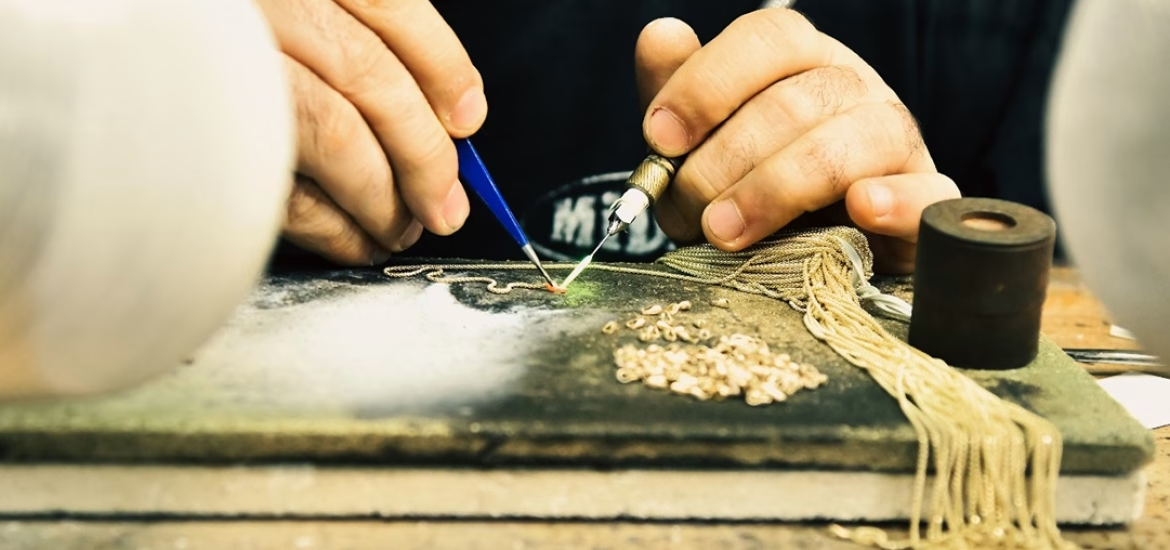
The Role of Handcrafting and Automation in Gold Chain Production
0 commentsThe production of gold chains has historically been carried out using both handcrafting and mechanized production techniques. These two methods each have their own advantages and limitations, but when combined, they often yield excellent results. High-labor designs, such as Fancy Necklace Models, clearly reflect the difference between these two approaches. Comparing these two methods in gold chain manufacturing helps us understand their unique contributions and highlights how the combination of craftsmanship and technology can lead to superior outcomes.
Handcrafted Custom Designs vs. Machine Production
Handcrafted gold chains are usually highly aesthetic and customizable pieces. Handcrafting allows for meticulous detailing, transforming a gold chain into a work of art. Artisans manually shape, assemble, and polish each link. This method is especially preferred by customers looking for limited-edition and custom designs. Chains produced in this way are often unique, with each piece featuring distinct details.
However, handcrafting has its limitations. The number of chains an artisan can produce is limited, and the process is time-consuming. Additionally, the quality and consistency of craftsmanship depend on the skill of the artisan, which can increase costs and make large-scale production challenging.
Machine production has brought a significant transformation to gold chain manufacturing with advancements in technology. Mechanized production allows for fast and large-scale manufacturing. Using Computer-Aided Design (CAD) and Computer-Aided Manufacturing (CAM) systems, gold chains can be produced with absolute precision. Machine production ensures consistent quality and high production speed, making it ideal for large-scale distribution and retail sales.
The advantage of mechanized production lies in its precision and efficiency. However, it may have limitations in terms of design uniqueness. While machine production is highly effective for standard models, it may not achieve the same level of detailed craftsmanship found in handcrafted artistic designs.
Combining Both Methods for Optimal Results
Both production methods complement each other, and most gold chain manufacturers achieve the best results by combining these approaches. The integration of handcrafting and mechanization merges the best aspects of both worlds.
Mechanized production is used to create the basic shapes, standard sizes, and bulk quantities of gold chains. This increases efficiency and reduces costs. Handcrafting is then applied for special design elements or intricate details. The final hand-finishing touches enhance the aesthetic appeal and uniqueness of the chains.
For example, in a gold chain design, the primary links may be machine-produced, while elements such as end connections, clasps, or decorative details can be handcrafted. This combination maximizes both speed and quality. Furthermore, this method allows for the production of all types of gold chain models. It enables both large-scale production and the creation of luxurious, custom-made chains.
Conclusion
Handcrafting and mechanized production serve different purposes in gold chain manufacturing, but when used together effectively, they provide the best of both methods. Machine production offers efficiency and cost-effectiveness, while handcrafting enhances the design with unique and artistic details. The combination of these two production techniques allows gold chain manufacturers to produce at high speed while also delivering high-quality, customized pieces. Ultimately, blending these approaches is the ideal solution for gold chain manufacturers seeking to offer both exceptional quality and distinctive designs.


